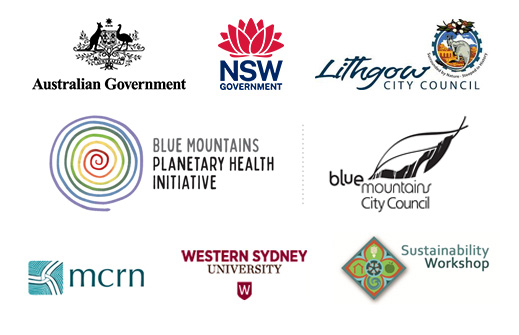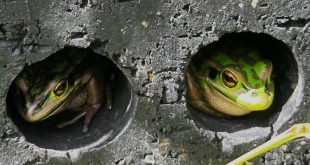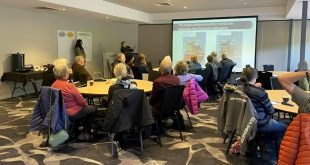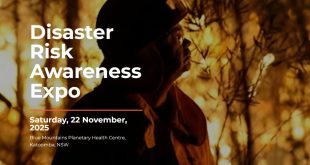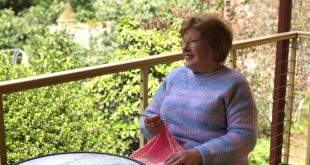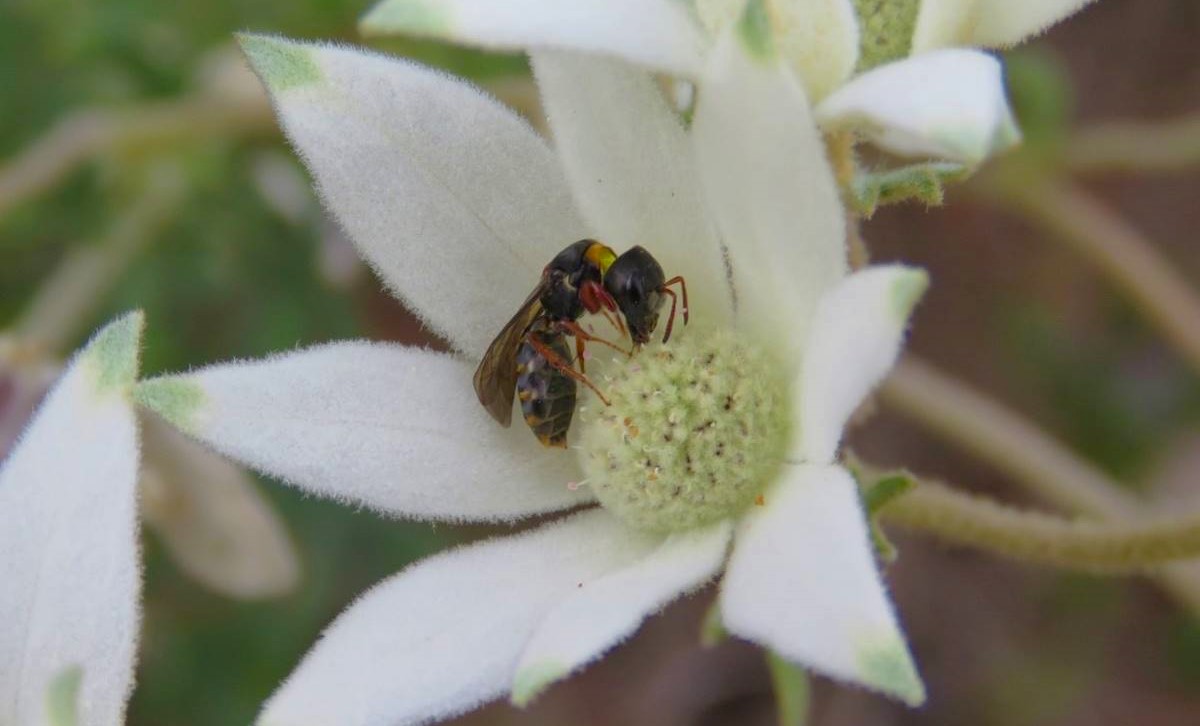
A rare Sericogaster Fasciata bee enjoys a feast on a native flannel flower in Faulconbridge. (Photo by V. Shepherd used with permission)
Story by Gabiann Marin
One cloudy afternoon in January 2021, local Faulconbridge resident Dr Virginia Shepherd stumbled upon an amazing discovery, almost in her own backyard. A native bee which had not been recorded in Australia for over 50 years and that was feared extinct.
Dr Shepherd discovered the animal quietly busying itself around the Ridge at Faulconbridge, a place which she believes is one of the most active and important areas for local wildlife and insect activity in the Blue Mountains.
Key Points:
- Documenting local insects can be fun, rewarding and a great opportunity to make an unusual or amazing find.
- Discoveries of rare and previously believed extinct insects are changing the ways we are seeing the current climate emergency.
- Citizen Science and amateur insect enthusiasts are a key part of the climate change solution.
Dr Virgina Shepherd doesn’t look like the average bug enthusiast. University educator and cell biologist by trade, she is more likely to be found in a lab or a classroom than out in the Blue Mountains bushland, but during Covid lockdowns Virginia discovered a hidden passion for the bushland right on her doorstep.
“I am so lucky to live along the Ridge,” Dr Shepherd says. “We have a very special area: a unique kind of ridge system in the mountains. It’s a unique sort of habitat in all sorts of ways. There’s bushland, heath land. We get lots of pea flowers, like the gompholobiums and many other kinds of Australian native pea plants. Such a huge variety of plants in such a relatively small area.”
Yet it was not the local plant life, occasional wallaby or even the bountiful birds that drew her to exploring the Ridge, but rather those usually ignored or misunderstood creatures of the bushland: beetles, hoverflies, bees, wasps and other native insects, which really captured Dr Shepherd’s attention.
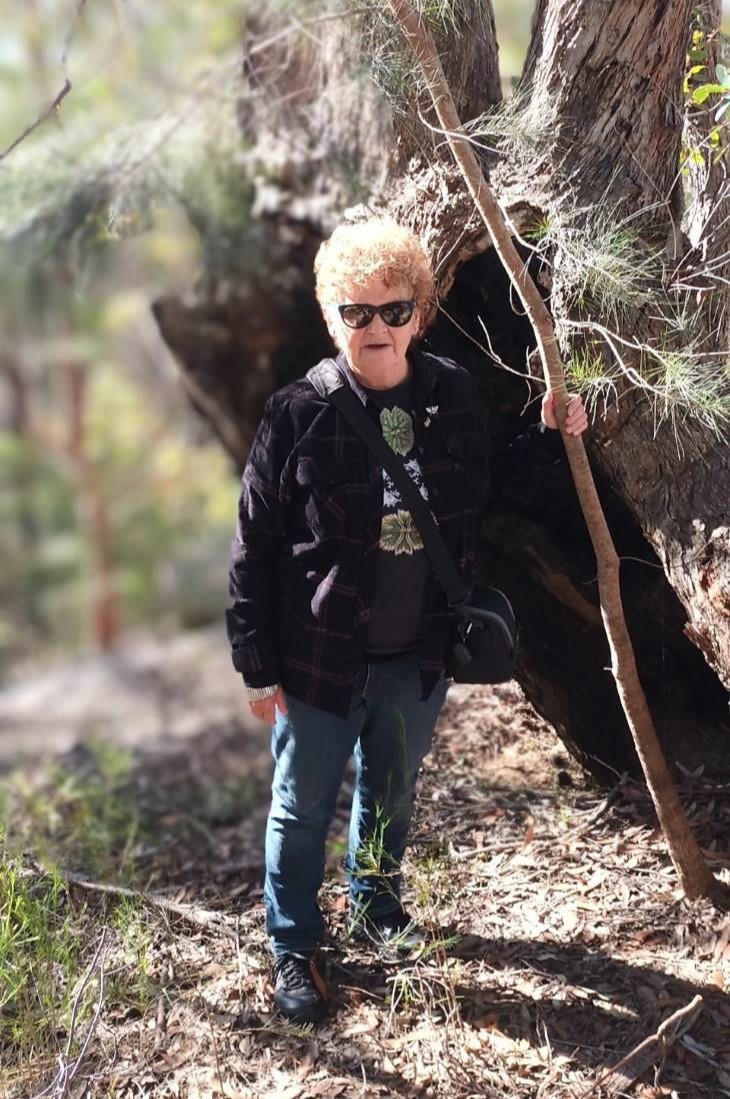
Dr Virginia Shepherd explores her local bushland on Faulconbridge Ridge. (Photo: Gabiann Marin)
“You know they are really weird and beautiful,” Dr Shepherd enthuses, as she walks along the Ridge, stopping occasionally to take a digital snap of a tiny hovering insect or inspect the trail of an elusive beetle. Virginia’s enthusiasm is infectious as she rattles off the impossible sounding Latin names of the beetles, flies and bugs she encounters.
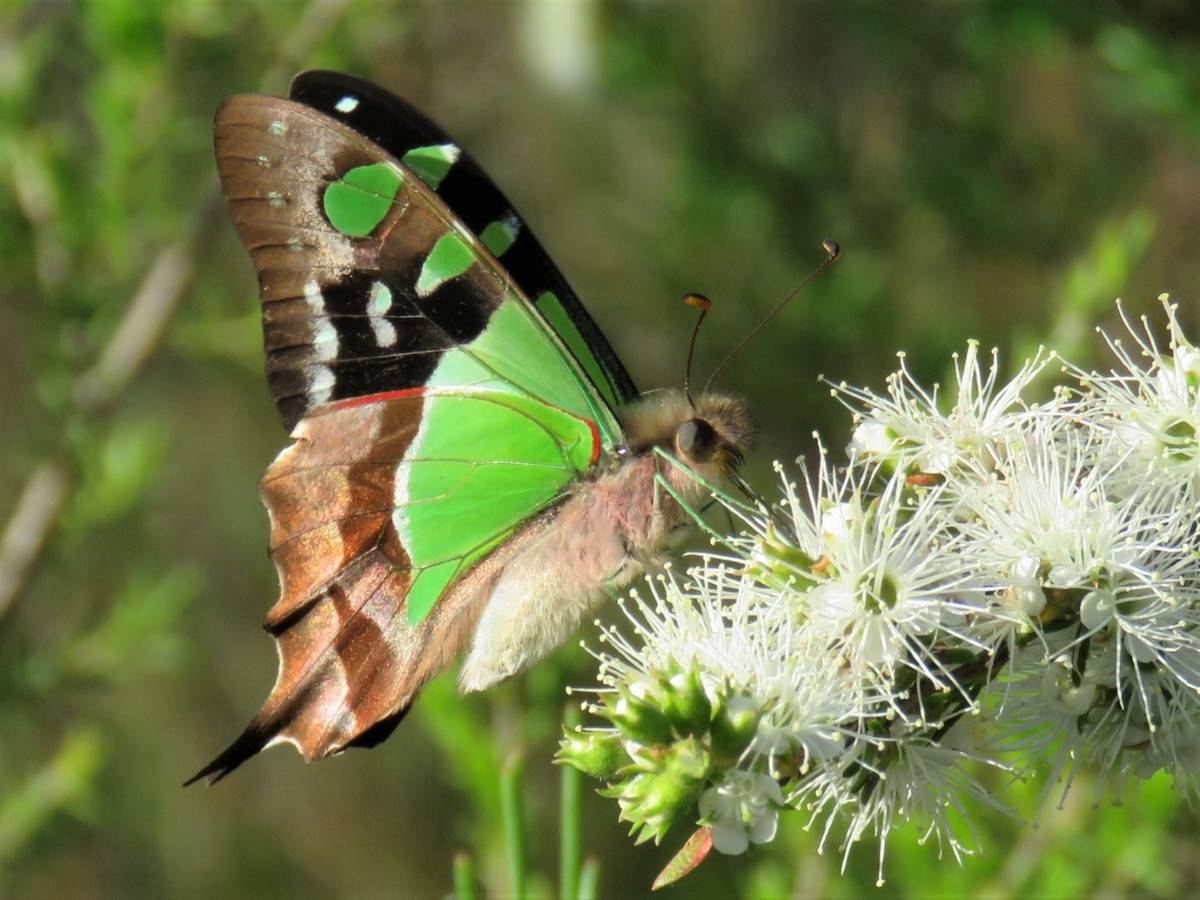
Macleay’s swallowtail, (Graphium macleayanum) foraging on Kunzea. (Photo by Dr V. Shepherd used with permission)
She speaks of other ‘finds’: jewel beetles whose glossy shells shine like rubies, emeralds and sapphires; a yellow and green metallic bee she became friendly with over several visits to his favourite flower bed, and of course, arguably her greatest discovery: a crimson and chrome insect sitting quietly on a flannel flower.
“It had a really striking striped abdomen and definitely an hymenopteran head, which (I thought) meant it was an ant, bee or wasp, or it could even have been a fly mimicking a bee. I’d never seen anything quite like it, so I took a whole series of really good quality photos of it taking pollen from this flannel flower. I hardly ever see bees on flannel flowers. So that was another thing that made me think it must be a wasp or a fly. But I honestly wasn’t sure what it was. It was so unusual.”
Thanks to the development of digital photography, the photographing and documentation of insects has become simple and effective, resulting in a huge rise in amateur entomologists across Australia. Dr Shepherd, who only really started getting into insects quite recently, and would never consider herself an expert on the insect world, has uploaded over 5000 photographs of different invertebrates on different internet and insect enthusiast groups, all taken around Faulconbridge Ridge, only metres from her home.
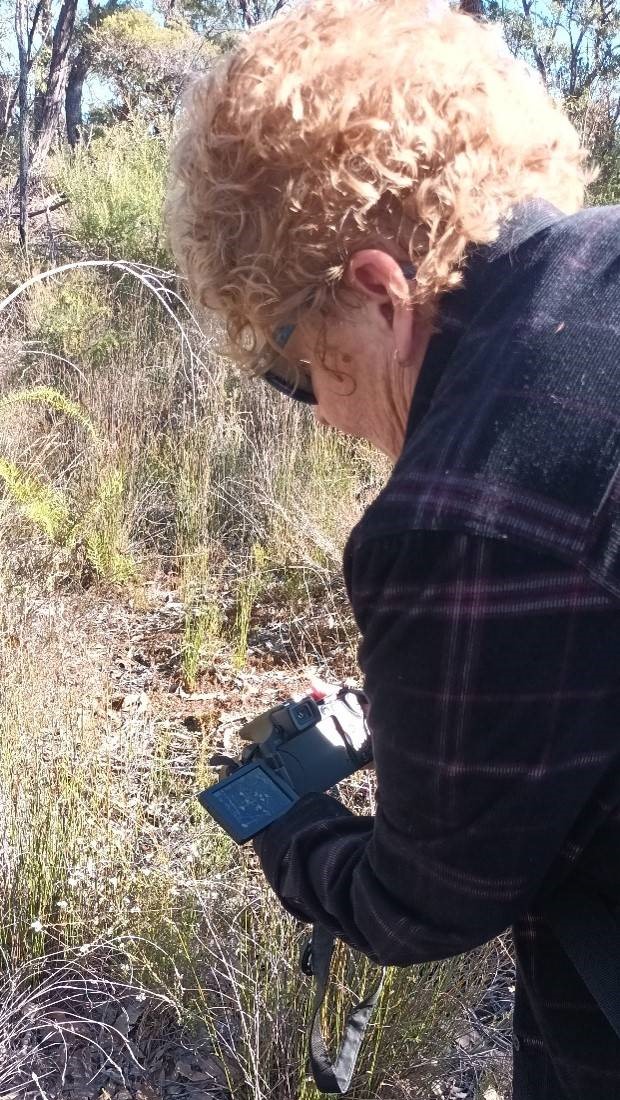
Dr Virginia Shepherd stops to take a photo at one of her favourite spots on the Faulconbridge Ridge. (Photo: Gabiann Marin)
“I just started wandering around, with the camera, seeing these creatures of absolute beauty. I suppose it’s the beauty that draws you in… the incredible nature of their construction. And with digital photography, of course, you can look at a photo and you can blow it up on a screen to the pixel kind of level, so you can see all these details; like these hoverflies, for example, with these incredible orange sensory organs like knobs poking out from their heads. It’s like science fiction, only you can’t make this stuff up.”
So of course, after finding and photographing her unusual find, Virginia started uploading the photographs of the unique crimson and yellow insect onto Facebook groups, and amateur entomology websites like iNaturalist and Bee Aware, asking if anyone had an idea of what the creature could be. No one could give her any answers until, one morning, she got a message from one of Australia’s most well-known and respected bee experts, Ken Walker – and his response blew her away.
“He was really emotional,” Dr Shepherd recalls, “because I had taken this photo of what he knows is an incredibly rare thing, which has not been captured in the 30 million records on iNaturalist and millions of records on Atlas of Living Australia.”
Walker explained that the insect was not a wasp, but actually a very rare type of bee, known as the Sericogaster fasciata, and that the last reported sighting of one was way back in the 1940’s. There had not been any record of a living one in over fifty years.
“And yet there it was, “ Dr Shepherd smiles, “just buzzing around Faulconbridge. Not extinct at all.”
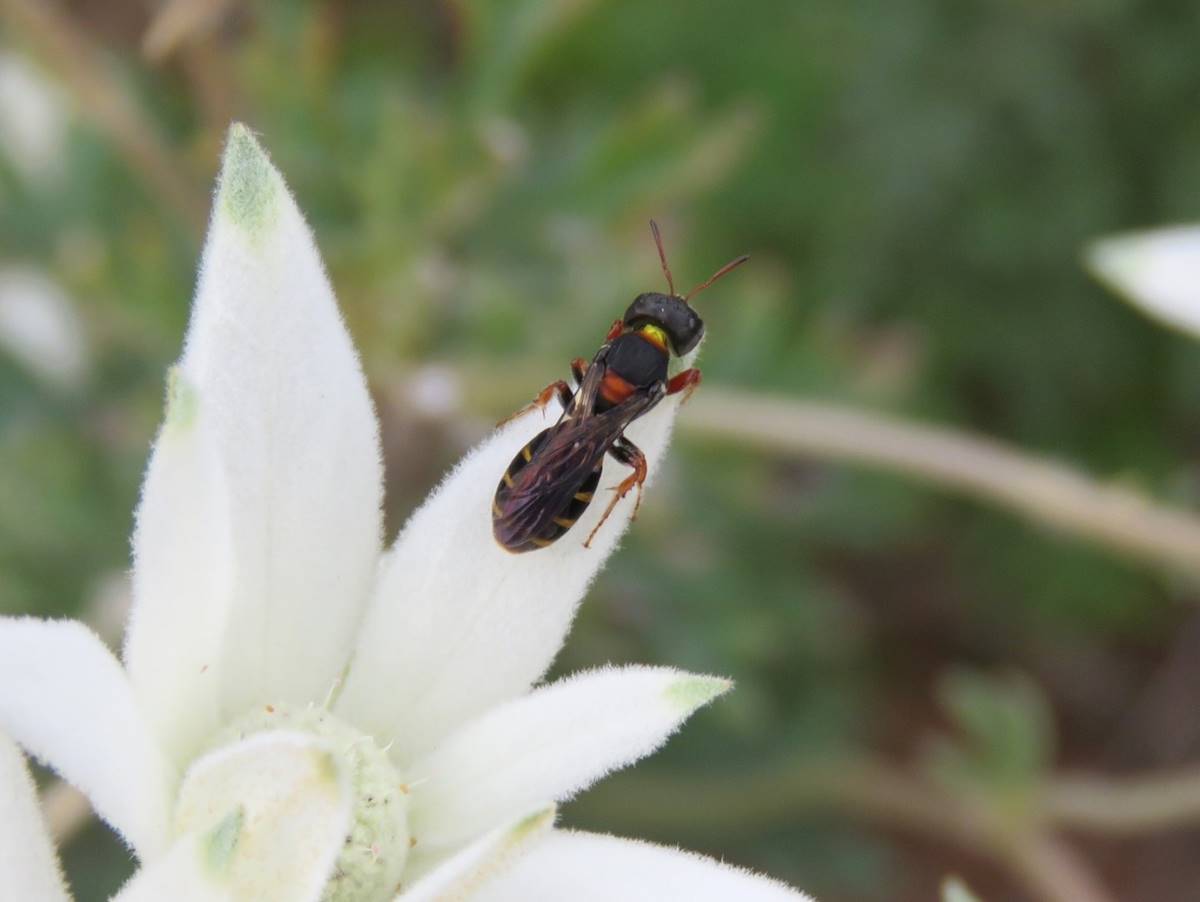
The extremely rare Sericogaster fasciata bee was re-discovered by Dr Virginia Shepherd – over 50 years after it was last recorded. (Photo by Dr V. Shepherd used with permission)
Since this discovery, Dr Shepherd has continued to document the Ridge’s insect life through all the different seasons, noting not just unusual species, but documenting things like life cycles, fertility rates and differences in behaviour as weather patterns change across the region.
“I just became addicted to looking for things,” Dr Shepherd admits, laughing, “and every year, the same cycles begin to repeat. So you see the same things, but they are different. I was out there in winter, on the shortest day of the year, when everything felt very still and very quiet. If you don’t look closely it seems that there are no insects around at all, but you can still see the occasional hoverfly or spider spinning a web.”
“And there are buds on everything, there is this feeling of coiled energy just waiting to burst out. Insects will suddenly appear along with the flowers. That relationship between the insects and the flowers is 140 million years old, a kind of co-evolution, a knowledge of one another’s synchronous cycles that triggers flowering of plants and the emergence of larvae that nourishes eveything else on the planet.”
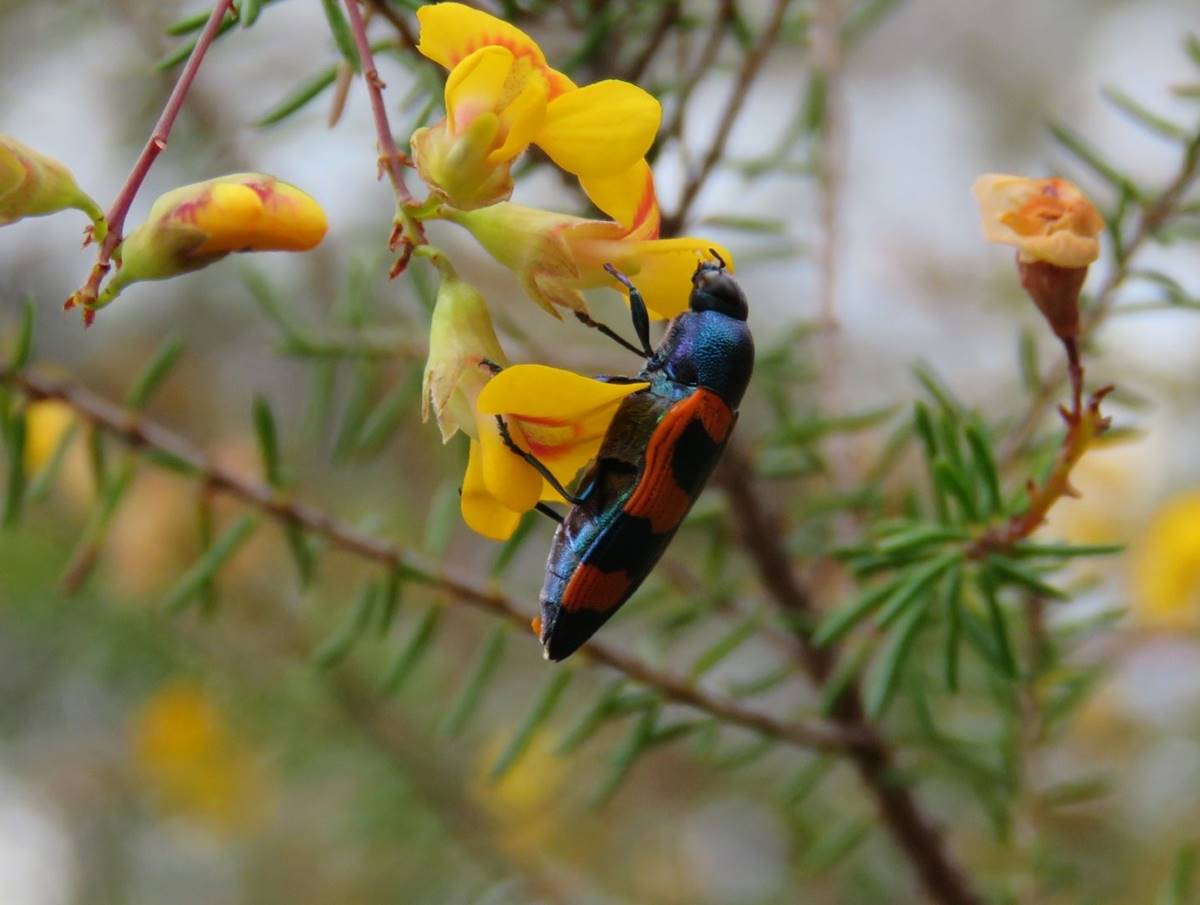
A native jewel beetle (Castiarina kirbyii) on a local flower, an example of a relationship which has been recurring for 140 million years. (Photo by Dr V. Shepherd used with permission)
While Faulconbridge Ridge may only be a small part of the greater bushland of the Mountains, Dr Shepherd’s observations and efforts to document this small patch of land can have big benefits for our ecosystem at large. Dr Kate Umbers, a local Entomology professor and advocate for invertebrates across Australia, believes that one of the primary issues facing our ecological future is the lack of understanding of insects and their life cycles.
Insects are the foundations of ecosystems and, citing problems like the current bee collapse crisis, Kate insists that by understanding what is going on in the tiny world of insects, we can have predictors of bigger issues, and potentially avoid larger ecological problems.
“But,” Dr Umbers warns, “there can be huge differences in insect populations from one year to the next. It’s not simple to predict or understand what might be a crisis in an insect community simply because we don’t have enough data about them in their natural habitats, [particularly] throughout their life cycles.”
“Important ecosystem functions can be lost long before the species are formally classified as endangered. You can get a year of huge numbers, but you can also get crashes. Because insects don’t live for a long time, population numbers bounce around a lot relative to the climate and the weather. So, they’re really seasonal and subject to changes in our weather and environmental systems.“
Amateur insect enthusiasts like Dr Virginia Shepherd are helping to fill in some of the gaps in knowledge that could end up providing us with real solutions and preventative strategies to combat ecological collapse threatened by climate change, as well as helping to establish more understanding and respect for the insects we rely on.
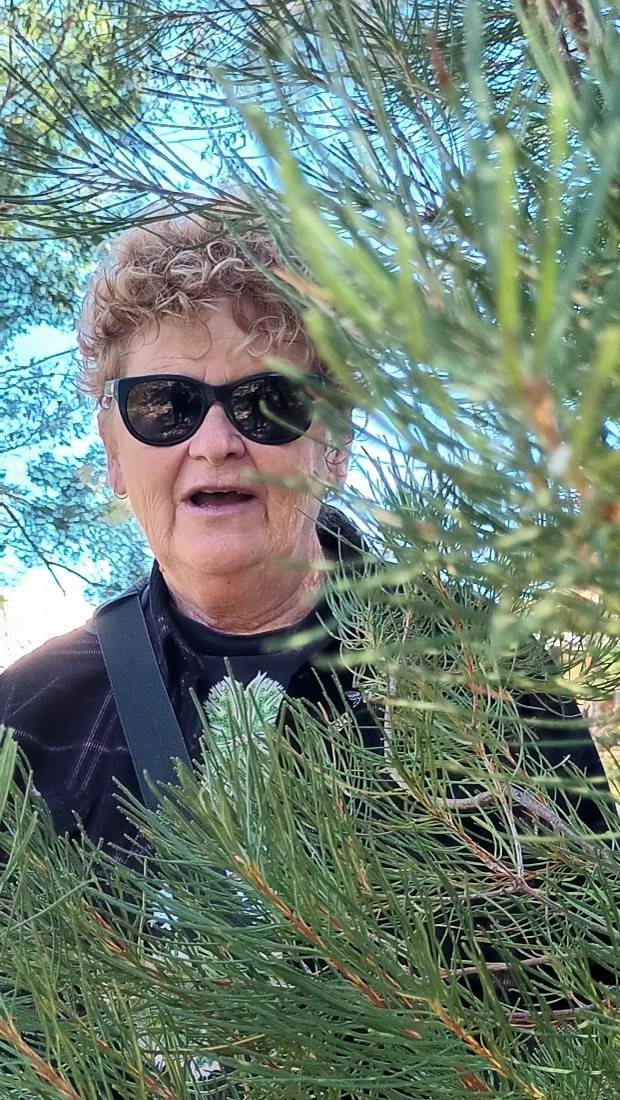
Dr Virginia Shepherd gains a great deal of personal satisfaction engaging with the bushland, the insects and the environment around her home. (Photo: Gabiann Marin)
And, Dr Shepherd believes, there is immense personal satisfaction and enjoyment to be had by anyone who sets out to document these animals.
“I feel I formed a kind of relationship with these creatures – I just love them. If I see a beautiful Castiarina Beetle in October, when they start to appear, I feel joy. You know, the same with bees. Native bees are much more difficult to photograph, so there’s a real sense of accomplishment, getting photos of them,“ Dr Shepherd reveals.
“And ultimately, as someone who wakes up in despair at night about what’s happening in terms of the climate catastrophe that’s unfolding in front of us, it’s consoling to find these beautiful creatures, living their lives, enjoying their flowers, and quietly making the world a better place.”
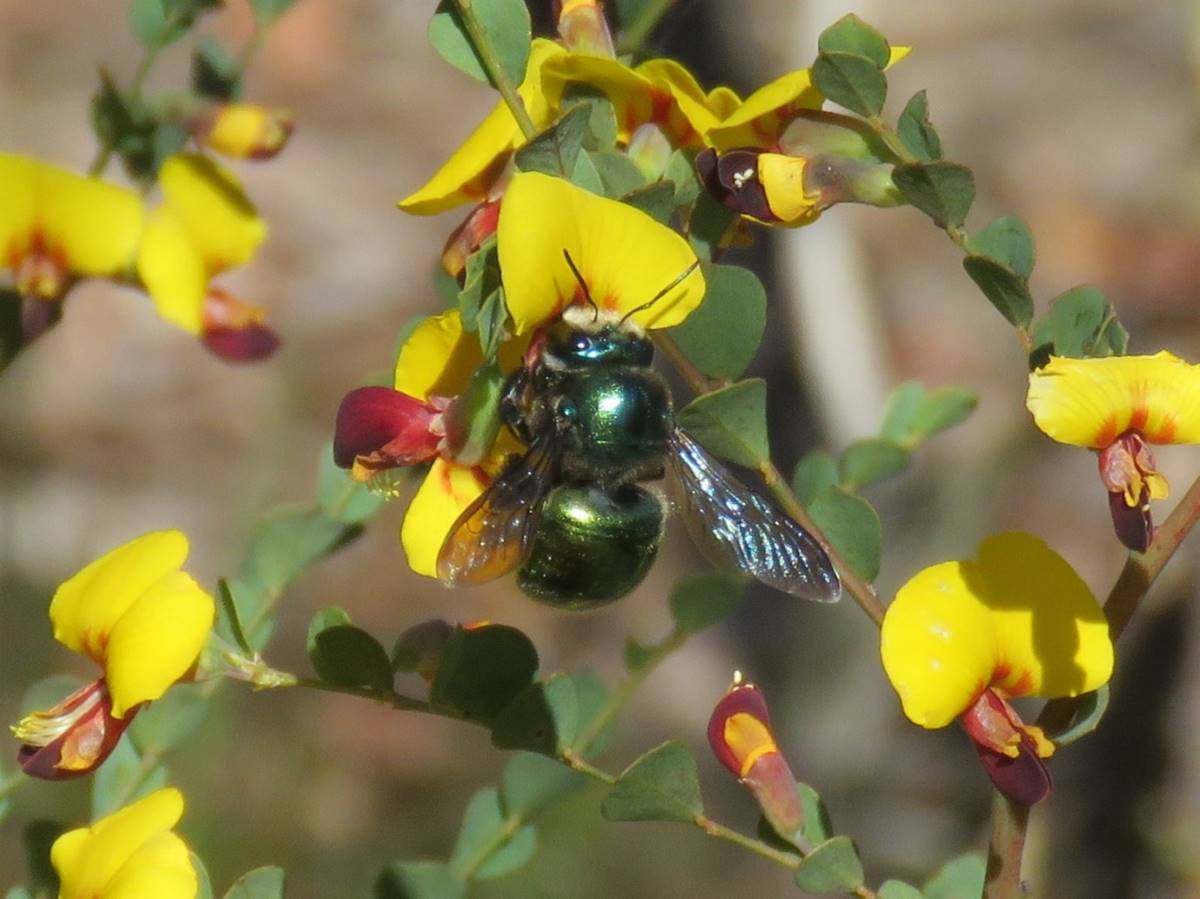
The green-gold carpenter bee, (Xylocopa aeratus), now thought to be extinct in Victoria and confined to the Sydney area, was photographed by Dr Shepherd in Faulconbridge. (Photo by Dr V. Shepherd used with permission)
Take Action:
- Exploring your backyard, public spaces or nearby bushland for insects can be a great activity regardless of age or fitness level. Uploading your photographs and notes on sites like www.inaturalist.org, www.beeaware.org.au or Invertebrates Australia also helps scientists and climate activists protect and understand these amazing creatures.
- Be aware of insect activity around any open area. Planting native flora in your garden can really help native insects of all types and contribute to a thriving ecosystem.
- When out in bushland be insect aware and try not to destroy or harm insect habitats or the creatures themselves.
- Avoid using pesticides and herbicides – particularly broad-spectrum types which kill every kind of insect in the vicinity. For alternative insect control check out the Invertebrates Australia website or our previous story on insect conservation here: Magical Creatures In The Garden
Share this article:
This story has been produced as part of a Bioregional Collaboration for Planetary Health and is supported by the Disaster Risk Reduction Fund (DRRF). The DRRF is jointly funded by the Australian and New South Wales governments.
